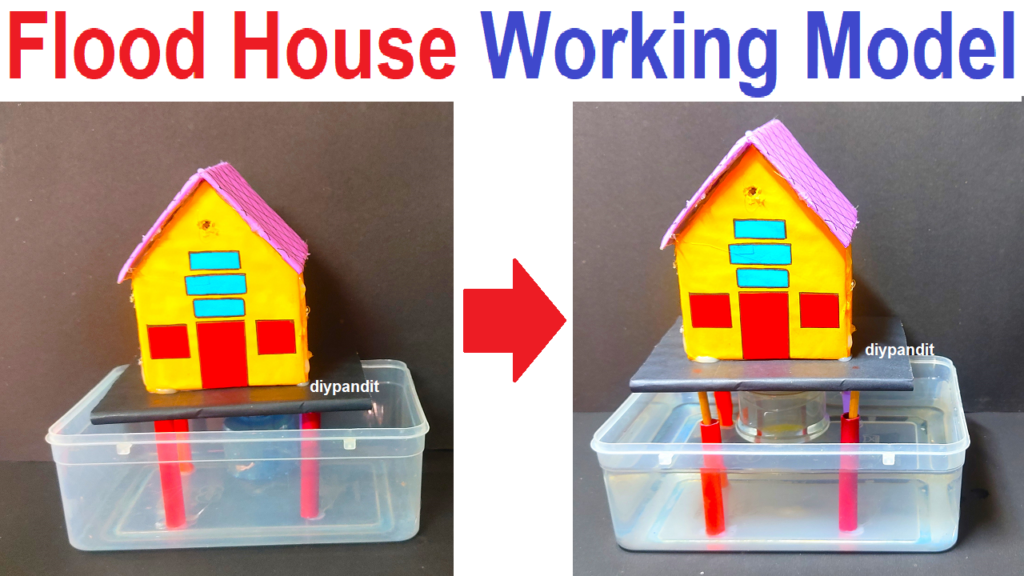The Flood House Model project aims to demonstrate the principles of resilient architecture through a hands-on, interactive model. By utilizing readily available materials like sketch pens, chopsticks, and cardboard, alongside a plastic container to simulate floodwaters, this project offers an engaging platform to explore the key elements of flood-resistant design.

Creating a flood house working model using sketch pens, chopsticks, cardboard, and a plastic container can be a fun and educational project! Here are the steps you can follow:
Materials Needed:
- Cardboard (for the house structure)
- Sketch pens or markers (for coloring)
- Chopsticks (for support)
- Plastic container (for simulating water flooding)
- Glue or tape (for assembly)
- Scissors (for cutting cardboard)
- Ruler (for measurements)
- Pencil (for marking)
Steps:
- Prepare the Base:
- Take a piece of cardboard and cut out a rectangle to serve as the base of your model.
- Use a ruler and pencil to mark out the dimensions you want for your house.
- Construct the House:
- Cut out four walls and a roof from the cardboard. You can design them to look like a house.
- Assemble the walls and roof using glue or tape to create the basic structure.
- Color and Decorate:
- Use sketch pens to color and decorate the walls and roof of your house. You can add windows, doors, and any other details you like.
- Add Support Sticks:
- Take chopsticks and attach them vertically to the base of your model. These will act as supports to elevate your house above the floodwater. You can attach them using glue or tape.
- Create Flood Container:
- Take a plastic container and fill it with water. This will represent the flood.
- Test the Flood Model:
- Place your house on top of the support sticks.
- Carefully pour water into the container to simulate a flood. Observe how the house reacts to the rising water level.
- Observe and Experiment:
- Watch how the floodwater affects the house. You can try different scenarios, like increasing or decreasing the water level, to see how it impacts the structure.
- Record and Learn:
- Take notes on what you observe. You can document how high the water level gets before affecting the house, how stable the structure is, and any other interesting findings.

